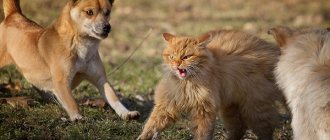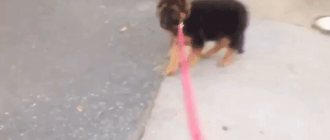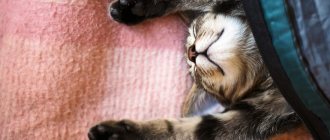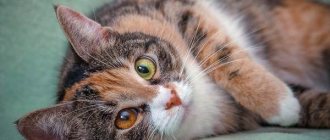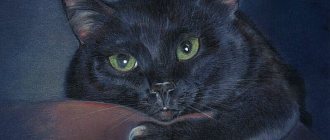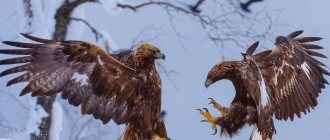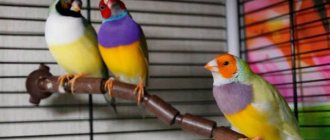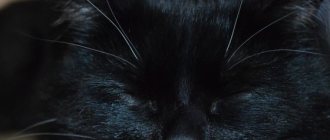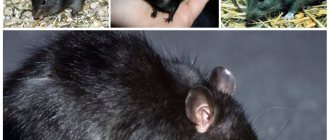08/16/2020 Scientist cat Animals
It is difficult to imagine our forests without birds and their wonderful singing. And it’s even more difficult to imagine a walk in the fresh air without the characteristic “peek-a-boo.” This sound is made by male cuckoos, and females make gurgling trills. It seems to be a very common bird, but not much is known about it because it is difficult to study.
Description of the common cuckoo
Do you know what this bird looks like?
The common cuckoo lives almost everywhere in Russia. But it is very difficult to see her. As a rule, everyone heard its “cuckoo”, but few can boast of having seen this bird. So, the common cuckoo can reach thirty-eight centimeters in length. The length of the tail is approximately thirteen to eighteen centimeters, and the wingspan is fifty-five centimeters. The bird weighs very little, about one hundred and thirty grams. Her legs are strong, but rather short. Females differ in appearance from males.
Females usually have red or brown plumage. There are black stripes along the back and head. The feathers themselves are edged with white. And the head and chest are usually light gray in color, but thin black stripes are clearly visible on them. The weight of the female does not exceed one hundred and ten grams. Juveniles are light rufous with dark stripes throughout the body. Birds molt twice a year. In summer this is a partial change of feather, and in winter it is a complete change.
Males have a dark gray tail and back. The chest and head are grey. All other feathers are quite light with dark stripes. The birds have a dark beak, but their legs are yellow.
Signs The cuckoo tells you how many years to live
Do you believe that the cuckoo calls for the correct number of expected years of life? I remembered an anecdote about this sign:
The mushroom picker found some unfamiliar mushroom. It took me a long time to decide to take it.
But then the cuckoo began to crow. The mushroom picker decided to trust nature and asked:
- Cuckoo, cuckoo, how many years do I have left to live?
The cuckoo began to count down. On number two, the mushroom picker cut the mushroom and put it in the basket:
- Well, that’s nice, that means it’s edible, let’s take it.
For some reason, as a child, I really loved asking the cuckoo how old I should live. Now I don’t even remember what was promised to me, but I always listened very carefully so as not to miss this “peek-a-boo.” This is a whole year of life. And as a child, it seemed that a year was a long time.
You have to admit, no matter what you do, when the cuckoo starts cuckooing, we freeze for a minute. It’s no longer respectable to ask, of course – we are already grown-up aunts and uncles, but for some reason we still involuntarily count. What are we counting?
And where did the sign come from that the cuckoo could answer the question asked?
There are a lot of signs associated with the cuckoo
According to Slavic legends, the cuckoo is the soul of a woman who has lost her husband. And her “peek-a-boo” is a call, a begging call to return.
You probably remember that in villages since ancient times, single mothers were called cuckoos. It was they who lost their love, and it was they who were patronized by the cuckoo.
Therefore, it was to her, an eternally mourning soul, that young girls trusted to measure the time until their marriage.
It was believed that if you get up before dawn, go out into the field and wait for the sun to start rising. It is at this moment that the cuckoo gives its voice and it is then that you need to ask it how long to wait for your betrothed.
According to legend, the cuckoo is very favorable towards young ladies waiting for love, so it always tries to answer honestly.
You could also tell the cuckoo about your unhappy love. It is believed that the cuckoo can take unrequited feelings to another world.
This is all according to legends, yes, according to legends.
But in fact, it turns out that it is not the cuckoo that is calling at all, but the cuckoo, i.e. male. It is he who encourages his fans to appreciate their masculine talents and virtues.
Be that as it may, it always makes your soul feel very good when in the forest, under the creaking of slowly swaying trees, you hear that cherished “cuckoo”.
This means there is another living soul next to you.
Just tell her: “Hi! Give your respects to your ancestors." And you can be sure that your request will be fulfilled.
I am always glad to see you on the pages of the site “I want to know everything”
Other similar articles can be read on the “Interesting” page
Bird breeding
The common cuckoo is a rather mysterious bird. It's hard to see. Many peoples have a lot of legends about it. And this is connected primarily with the unusual way of her life.
At the beginning of spring, cuckoos leave Africa and fly to Asia and Europe, to their nesting sites. They lead a solitary life. Males occupy huge areas that reach several hectares. But females have a less extensive territory. For them, an important criterion is the presence of nests of other birds nearby.
The common cuckoo does not build nests. But she actively watches other birds. For example, for representatives of the passerine family. Why do you think she does this?
The cuckoo chooses future teachers for its chicks. Yes, this is such a cunning bird. She completely relieves herself of all worries about raising children and shifts them onto the shoulders of others.
Strange habits of the cuckoo
The bird's caution is amazing. She ambushes in advance to look for a good suitable nest. As soon as she seizes the moment, she lays her egg in it in a couple of seconds. Scientists have come to the conclusion that at the same time she throws out someone else's egg. But this fact has not been confirmed. In fact, it is not clear why she would do this. Birds cannot count, which means the owner of the nest cannot detect the extra egg.
After the cuckoo hatches and gets a little stronger, it throws all its competitors out of the nest.
It must be said that the common cuckoo lays eggs not only in nests, but also in hollows. Or rather, she first lays them somewhere nearby, and only then carries them in her beak.
There is also a completely opposite opinion regarding how the cuckoo throws its offspring. Its coloring is somewhat similar to that of a hawk. And therefore the bird uses impudence. She scares away the owners of the nest by flying low over them, and while they are hiding in confusion in the grass or leaves, she lays her eggs. The male can help her with this.
Chicks at home
The cuckoo chick fell out of the nest.
Grown cuckoo chicks show interest in the world around them and often fall out of the nest. the lost chicks become prey for mammals, since the adoptive parents do not rush to help.
A selected cuckoo can be raised at home. It is known that
Cuckoos are insectivorous birds. They need to be fed animal food. IN
In the wild, the main diet consists of caterpillars. The young eat a lot and often. IN
per day it eats up to 50 caterpillars. And he asks to eat every half hour. In captivity they cuckoo
fed with mealworms, which are sold in pet stores. If there is no usual
for birds food, then give minced meat mixed with a raw egg, liquid food for
dogs and cats. canned food
The chicks do not care who is their breadwinner. they open their mouths with pleasure as soon as a person approaches.
By the month of life, the chick will learn to get food on its own. As soon as he gets on the wing,
he should be released. As a rule, cuckoos cannot be tamed.
Having matured, the bird will immediately fly away to freedom.
Cuckoos try to throw their eggs into nests where they correspond to the eggs laid by the nest owners themselves. Matching is usually determined by both color and size. First, she watches a little as the nest is built, choosing in advance those to whom she can lay her eggs.
It is worth noting that in one summer a female can produce up to 20 eggs, but of these she only manages to lay 5 eggs. If she does not find a nest, then she leaves her egg right on the ground or in some abandoned nest. If necessary, the female is able to hold onto an egg for several days, which is already ready for laying.
We suggest you read: How long can a cat live without food and without water - Zverki.Click
Rarely feathered nest owners notice the replacement of eggs. But
and already on the 13th day they are ready to hatch from the shell. They hatch naked and blind. At first, the little cuckoo chicks are very similar to the chicks of their adoptive parents, sometimes even their voice becomes similar to the sounds made by their adoptive parents. The hatched cuckoo has a sensitive back and a small depression in the tailbone area. If one of the chicks touches it, then with this depression it can throw the egg or the chick itself out of the nest.
The cuckoo is very demanding: it often opens its orange mouth wide, demanding food. Due to the cuckoo's constant demand for food, the owners of the nest do not even have time to see the chick fall and help it, and sometimes they simply ignore this fall. The cuckoo grows very quickly. It is known that already on the 22nd day it not only exceeds the size of its adoptive parents, but at this time it also leaves the nest. But the owners of the nest rush after it, feeding it with insects for several more weeks.
Chick Survival School
The common cuckoo, whose appearance is unremarkable, nevertheless has amazing cunning. She one by one throws her eggs into different nests, and with a pure soul she goes to South Africa for the winter. Meanwhile, sad events occur in the nests of the adoptive parents.
The baby cuckoo, as a rule, hatches a couple of days earlier than its fellows. During this time, he manages to acclimatize in the nest. Although he is still blind and naked, he has already developed the throwing instinct. Imagine him throwing away everything that touches his bare back. First of all, these are eggs and chicks. The chick is in a hurry to do its job. Instinct works in him for only four days. But this is quite enough to destroy competitors. Even if someone survives, he still has little chance of survival. The fact is that the cuckoo takes away all the food that its foster parents bring.
Appearance
The appearance of cuckoos can be very different - they differ in both color and physiological characteristics.
The most unique type of nest parasitism is inherent in the Galapagos American cuckoos. They operate according to raider takeover schemes. They do not build their own nests, but seize others’ ones and hatch their chicks in them.
Guira – married couple
Forgetful parents of the Bronze Cuckoo species that live in Africa are also an equally unique case. Their chicks hatch in the nests of their foster parents, and they feed them.
And when the grown-up young fly out of the nest, representatives of this genus remember their offspring and feed the almost adult chicks.
If we digress a little from the topic of nest parasitism and remember that cuckoos are forest birds that avoid both humans and their habitat, then it is interesting to consider another species of these birds.
California running cuckoos are sociable and not fearful. They feel calm and confident among people. And sometimes they even take advantage of this proximity.
For example: they love to fly next to passing cars in order to eat insects that fall within the range of the car.
By the way, for the American population, the running cuckoo symbolizes the same thing as the hare for us and is often mentioned in local folklore
Why don't birds notice deception?
The behavior of the nest owners is also surprising. They don't seem to notice what's happening. And they are trying to feed their only baby. And at the same time they don’t see that this is not their chick at all.
Not long ago, the reason for this strange behavior of birds was discovered. It turns out that the cuckoo's yellow mouth and red throat give the birds a powerful signal that forces the adoptive parents to carry food to the already large chick. Even foreign birds that happen to be nearby give him food they caught for their own chicks. Only a month and a half after the first flight from the nest, the chick begins to live independently.
Adaptability of birds
The common cuckoo mainly lays eggs on small birds. But some species also throw them into the nests of jackdaws and crows and other fairly large birds. Yet cuckoos specialize in certain birds, such as redstarts, robins, warblers and flycatchers. Cuckoos even have eggs similar to their offspring in both shape and color.
But as for their size, it’s a complete mystery. The bird itself weighs about one hundred and twenty grams, which means its egg should weigh fifteen grams. Instead, the cuckoo lays very small eggs weighing three grams, which is disproportionate to its size.
Once upon a time in England they organized an exhibition of cuckoo eggs. So, nine hundred and nineteen copies were exhibited. They were all different colors and sizes. This means that the birds lay eggs that are exactly like the eggs of their adoptive parents. The cuckoo throws them into the nests of at least one hundred and fifty species of birds.
This is such an unusual bird. The common cuckoo, however, despite such a parasitic way of life, is beneficial.
Lifestyle
Male cuckoos immediately occupy a fairly large area, attracting females with their loud and meaningful cry. Thanks to this cuckooing, this bird got its name. Females are not so melodious and prefer to remain silent, but sometimes in flight they can also emit a ringing trill, attracting males for mating.
Today, over 120 species of birds are known into whose nests the cuckoo has ever laid its eggs. But usually they try to select songbirds from the passerine order. That’s why cuckoo eggs are so easy to throw into nests, because they match in size and color. It is known that if a female cuckoo grows in a nest, then the next summer she will return to the area where her adoptive parents had their nest, remembering the appearance of those who raised them. Young birds begin to breed later than older birds. By the way, the life expectancy of a cuckoo in the wild does not exceed 5–10 years.
Cuckoo flies in the sky
Many species of cuckoos are migratory birds. Crested representatives of the genus, living in Europe and southern Africa, migrate to North Africa for the winter. Thick-billed cuckoos, which live in southern Africa and Madagascar, fly to the eastern part for the winter.
The most studied way of life of the common cuckoo. The bird hides in thickets of dense forests most of the year. It does not show itself to humans or animals. At this time he practically does not sing. Cuckoos lead a secretive lifestyle. They never gather in flocks, forming pairs for one season. During the breeding season they become more sociable.
The males sing their perky songs, and the females begin to search for territories for breeding. Mating games consist of exhibition performances and fierce fights for females. Males spread their tails and invite partners. In gratitude for the fact that the female chose him, the male brings her a twig or leaf as a gift.
cuckoo's nest
Cuckoo birds do not build nests and do not raise offspring. These birds are complete parasites that get rid of their eggs and maintain the population at the expense of other species of birds. Cuckoos do not have a developed maternal instinct, so they try with all their might to free themselves from the shackles of motherhood by throwing eggs to other birds. This way they free up time for themselves to search for food and rest.
The lifespan of cuckoos is 9-11 years. Most birds die at a young age due to predators that destroy bird nests.
We suggest you read: How to plant a duck to hatch eggs
There is no nesting breeding area. Only areas where the female replaces eggs are divided geographically. In one area there are 2-3 females at once. Two or three cuckoos can throw their eggs into one nest at once.
Two cuckoos sitting on a pine tree
Cuckoos are polygamous birds. They pair only to fertilize eggs. A male mates with 5-10 females per day. Females wait for males in “their” territory. Partners visit the spouse and then leave her habitat in search of another partner.
Photo of cuckoo eggs
In one clutch, the female brings up to 15 eggs. She will carry them all to nearby nests. At the same time, the mother cuckoo still takes care of her future cubs - before laying an egg, she throws the host’s eggs out of the nest. Foster parents hatch and raise not their own chicks, but cuckoo chicks.
Photo of a tossed cuckoo egg
This way of life has developed in the cuckoo due to the biological characteristics of the bird’s body. The cuckoo lays eggs at intervals of 3-5 days. During the summer season, she brings more than a dozen eggs, while most bird species have only 2-4 eggs in their clutch. The chicks hatch in accordance with the laying order.
If the cuckoo hatched its offspring on its own, it would have to stay in the nest for two months. In addition, she is not able to feed such a number of chicks, even if a male would help her. Therefore, evolution has led to the fact that the cuckoo has no choice but to raise its young with the help of other birds.
The cuckoo carefully selects parents for its offspring. Most often, she returns with her native biotype and throws eggs to the species of birds that she herself fed. The female cuckoo watches the birds and settles down next to the pairs busy building a nest. As soon as the bird determines the laying site, its body starts the mechanism of egg formation.
Another thrown egg
The cuckoo lays eggs directly into someone else's nest. To do this, she waits for the owner to fly away, then lays the eggs within 15 seconds. The male helps the female drive the hosts away from the nest. He circles around the nest, pretending to be a hawk. Other birds, afraid of being caught, fly away. Seizing the moment, the female cuckoo rushes to someone else's home.
Photo of cuckoo chicks
Chicks are born earlier than others, newborns are much more developed than their half-brothers and sisters. Cuckoo whales are very voracious. They constantly demand food, food for the entire area. Cuckoo chicks do not like competition and usually throw their adoptive parents out of the nest. The instinct to get rid of strangers fades away by the fourth day of life.
Not all cuckoos engage in parasitism. Species living in tropical Africa do not throw eggs, but build one common nest and lay eggs in it. Mature birds are engaged in raising offspring.
Is the cuckoo useful?
At first glance, everything is clear. The common cuckoo is a bird of prey that destroys the chicks of good and useful birds. However, not all so simple.
Probably, the cuckoo is not a completely bad mother; she still makes efforts to save her offspring. And the cuckoo’s desire to destroy competitors is explained by its great gluttony.
It is this amazing love for food that makes this bird very useful. What do you think the common cuckoo eats? That's right, caterpillars. In just one hour, it can destroy up to a hundred caterpillars. And this is not the limit, since the bird is incredibly voracious.
If a lot of parasites appear in the forest, then she will eat them all, and all her relatives will rush to her aid. So cuckoos destroy a huge number of pests and insects.
Many birds do not eat hairy caterpillars. But the cuckoo does not overeat in this sense. Its stomach is designed in such a way that the hairs of the caterpillars do not cause harm, but are quietly gradually excreted.
Where does the common cuckoo winter?
The cuckoo, no matter how surprised you may be, is a migratory bird. For the winter she moves to South Africa. But how this happens is unknown, because no one has seen cuckoos flying in flocks, which is typical for other birds. Apparently, they fly alone. They very quietly disappear from the forests in the fall, as if they were never there. And just as unexpectedly they appear in the spring, with the first bright rays of the sun.
Sometimes cuckoos can fly to the south of the Arabian Peninsula, to the Chinese provinces on the island of Ceylon, in Indochina.
Those individuals that winter in Africa leave it in early March. Birds fly very slowly, covering eighty kilometers a day. They fly day and night without resting. They spend three months at the wintering site.
Common cuckoo
| Latin name: | Cuculus canorus |
| English name: | Cuckoo |
| Squad: | Cuculiformes |
| Family: | Cuckoos (Cuculidae) |
| Body length, cm: | 32–34 |
| Wingspan, cm: | 55–60 |
| Body weight, g: | 70–160 |
| Features: | voice, nest parasitism |
| Number, million pairs: | 1,3–1,9 |
| Security status: | BERNA 3 |
| Habitats: | Wetland species |
| Additionally: | Russian description of the species |
Somewhat smaller than the crested cuckoo, the tail is shorter, the wings are narrower.
The underbody has clearly visible transverse stripes. There are two color morphs: one with a predominance of gray in the color of the upper body, head, crop and chest, the other, which is rarer, is reddish. Sexual dimorphism is weakly expressed. Juveniles have transverse stripes throughout the body and white spots on the crown and back of the head. Spreading . The species is migratory, long-distance migrant. There are 4 subspecies found in Eurasia and North-West Africa. In Europe, the cuckoo is widespread, right up to the north of Scandinavia. Winters in South Africa. In Italy in summer there are more than 50 thousand males, found up to an altitude of over 2 thousand meters above sea level.
Habitat . The species is common, inhabiting forests and bushes of various landscapes, often found in rural areas: in gardens, along wooded plains and hills. The spread is associated with passerine birds, in whose nests the cuckoo lays eggs.
Biology . The common cuckoo is a nest parasite. Beginning in April, it lays one egg in the nests of various passerine birds. After 12 days of incubation by the foster parents, the cuckoo hatches. In a short time, the newborn pushes the eggs and chicks of the owners out of the nest with its back. The chick remains in the nest for 17–19 days, and if it is fed by warblers, then a week less. It feeds on various insects, often hairy silkworm caterpillars. The male’s voice is a two-syllable “ku-ku”, the female’s is a loud trill “tli-tli-tli” and a dull sound similar to laughter. In flight it resembles a sparrowhawk, but differs from the latter in its longer and wedge-shaped tail and “non-predatory” beak.
Interesting fact . During a season, one female can lay up to 20 eggs, usually one per nest. The color of the eggs in most cases is similar to the color of the eggs of the parent species. About 150 species of birds (mostly representatives of the warbler family) are known to be parasitized by the common cuckoo. In Italy, the number of host species (all passerines) reaches 50.
Common cuckoo (Cuculus canorus)
Other species in this family:
Crested cuckoo Clamator glandarius Distinctive features: plumage color, voice, nest parasitism
Are all cuckoos parasitic birds?
It would be unfair to say that absolutely all representatives of the cuckoo family are parasitic birds. Of one hundred and fifty species, only fifty do not behave very nicely. All the rest are exemplary parents, raising their offspring independently.
And there are also species that are partially parasitic. For example, the ani-eater cuckoo lives in South America. So she occasionally throws eggs into the nests, but only of her relatives. But this rarely happens. She mostly raises her babies on her own.
The common cuckoo (photos are given in the article) is distinguished by unusual behavior among representatives of its family.
There are cuckoos in the world that throw eggs into their nests, but then hatch them themselves or, conversely, later feed them on their own. And there are those who place their offspring in the nests of large birds. Then the cuckoo does not need to throw rivals out of the nest, since there is enough food for everyone.
bearded cuckoo
Bearded cuckoo in the forest
- Latin name: Cuculus (Hierococcyx) vagans
- Weight: 140 g
- Conservation status: Rare species
A small agile bird, no larger than a pigeon. Body length is about 32 centimeters, weight is 140 grams. Breeds mainly in Indonesia, Brunei, Malaysia, Myanmar and southern Thailand. Lives in the subtropics and tropics, in dense forests. Leads a sedentary lifestyle. Due to the cultivation of wild areas, the number of bearded cuckoos has decreased.
The bearded cuckoo is up to something
The back, nape, tail and wings are painted brown, which is diluted with creamy strokes. There is a thick “beard” of white feathers on the throat. The chest and belly are white with symmetrical black vertical stripes. Legs and eyes are yellow. The beak is black.
Photo of a bearded cuckoo
The bearded cuckoo breeds in the summer. The female lays one bluish egg in the nests of other birds. The cuckoo throws other eggs out of the nest, remaining alone with its foster parents, who feed it for a month. Then the grown chick leaves the monastery.
Broad-winged cuckoo takes a closer look
- Latin name: Cuculus fugax
- Weight: 130 g
- Conservation status: Least Concern
A small bird with a shallow head, a long forked tail and wide, shortened wings. Body weight does not exceed 130 grams, body length is 30 centimeters. Its behavior in the air is similar to that of a hawk. Color: the back, wings and tail are painted graphite, the belly, chest and throat are cream with long longitudinal dark gray stripes-curves. The edge of the tail is red.
We invite you to read: Stop stress drops for cats: instructions for use, analogues, price
The broad-winged cuckoo turned around
This type of cuckoo is divided into three subspecies:
- C. fugax - lives in southern Burma, Thailand, Singapore, Borneo, western Java;
- C. hyperythrus - breeds in China, Korea, Russia (Far East) and Japan. Groups living in the north winter in Borneo. In Russia they live in mountain taiga forests.
- C. nisicolor - distributed in northeastern India, Burma, southern China.
The broad-winged cuckoo screams loudly, but it is difficult to see it, as it hides in windfalls or impenetrable thickets. For ornithologists, this is one of the least studied species of birds in the cuckoo family.
Are all adoptive parents ready to raise someone else's chick?
It is not clear why birds raise someone else's baby after discovering a substitution. As experiments show, almost all birds do not know their eggs well. That's why they don't see the difference. Ducks, chickens and eagles in general can hatch absolutely any object that resembles an egg in shape. It was once noticed that the swans had the intention of hatching a bottle.
Scientists even experimented with replacing all the eggs in the nest, after which the bird laid its own egg. So, seeing that it was not like everyone else, she threw it away, mistaking it for someone else’s.
But not all birds are so stupid and indiscriminate. Some skillfully detect substitutions and throw them out of their nests. Others simply abandon their homes along with their future offspring and begin to build a new nest. And some birds build a second floor above the old nest, resulting in a two-story structure, on the first level of which abandoned eggs are located, and on the second the bird lays new offspring.
Where does the cuckoo live?
The common cuckoo is quite widespread. It nests in the European part of the mainland and on the nearest islands, in Africa, Asia, and sometimes even migrates beyond the Arctic Circle.
In May and July in Russia the bird can be found almost everywhere except the northern tundra. Interestingly, different regions of the country are home to different numbers of parasitic species. There are five of them in total in Russia. All together they live in the Primorye region; only two of them live in the European part. The main places of residence are forests, parks, gardens, clearings near clearings, forest edges, coastal thickets and shrubs.
About the cuckoo for children
Who is the common cuckoo? A description of this unusual bird for children should begin with the benefits it brings. Of course, the cuckoo kills the offspring of birds, but not many of its babies survive. Of the five eggs she throws, not all the chicks will hatch; only one cub will reach adulthood. After all, some birds, sensing deception, abandon the nest along with all the eggs, which simply die.
The voracious nature of the bird makes it very useful. She needs to eat a lot, and she doesn’t eat insects, she eats everyone around her. There is even a popular belief that if more than one cuckoo cuckoos in one place, this indicates a large number of insects. This statement is absolutely true. If a large number of insects are bred in a certain area, then not only relatives from the nearest areas will come to the feast, but also the most distant relatives will come. This is how these strange birds work.
Source: fb.ru
animals, nature
Who is the cuckoo?
The cuckoo is a bird quite common in the world. She lives both in Asia and other countries. It even settles in South Africa. Therefore, she can ruin the lives of birds
almost every corner of the Earth. This is such a bird, it turns out. If you need to describe what a cuckoo looks like, then there is nothing complicated about it. It is very easy to remember information. Its body reaches 40 centimeters in length. This is a fairly large bird.
If it straightens its wings, then their span will be half the length of the body of this bird. So she will never have problems with flying. Due to the anatomical features of the wing, it is not surprising that in less than a month the chicks mature to the point that they can fly out of the nest and forget about their foster parents forever.
Despite its rather large size, the cuckoo is a fairly light bird. Its weight reaches a maximum of one hundred and twenty grams. If you compare it with some other objects, it turns out that the weight of a cuckoo is not much more than that of a mobile phone. Or rather, the same if we are talking about a regular mobile device capable of installing some applications and surfing the Internet. It is clear that a regular phone is lighter. But such a weight is typical for a smartphone.
The cuckoo has a very long tail. This also helps the bird in flight. If the wings are necessary in order to stay in the air, gliding above the ground, then the tail acts as a rudder. That is why the cuckoo can be called quite maneuverable
bird. Everything, as it turns out, is because of the tail. Its length is about 20 centimeters. That is, it turns out that half of the bird’s body is the tail. Just imagine.
Despite the lightness of the body, it is quite dense. In general, it is surprising that such a bird with quite large dimensions and a dense body turns out to be light. The cuckoo is also characterized by its small legs. Perhaps this contributes to the weight. However, the bird should be light. Otherwise, the wind simply won’t pick it up and it won’t fly. It’s just that birds of such a large size are so light, that’s what’s amazing.
In general, the cuckoo has a dense body and short legs. It is this combination of characteristics that characterizes the bird as a recognizable image
, and it is so recognizable that even in Russian folk tales it is popularized.
Cuckoos, like other birds, have sexual dimorphism
. If someone doesn’t know, then these are the external differences between a male and a female. Sexual dimorphism is also characteristic of humans. This is a sign of the biological development of a certain species. What distinguishes a male from a female? Like many other animals, males and females can differ in plumage. Let's compare males and females based on their characteristics. But from the very beginning it is necessary to list what distinctive features males have in appearance.
- Back and tail. In males, these parts of the body have dark gray plumage. This makes the cuckoo undetectable to some birds
in certain conditions. These birds must be able to camouflage themselves not only so that predators do not notice them, but also to lay and track the nest. So you won’t find bright colors among cuckoos. - The crop and throat are light gray in color. This combination looks quite beautiful together with the dark gray colors of the back and tail. It turns out that this is a slightly transitional color, which makes the cuckoo a smoothly colored bird.
- The rest is white with dark stripes.
Females have brownish tones, unlike males. It is by them that one animal can be distinguished from another. However, if both sexes are young, their sex color differences are not particularly noticeable. They have not yet developed pigment, so the color of young birds is light gray
and there are stripes all over the body. In general, we figured out what a cuckoo looks like. Now let's talk a little about other aspects of her life.


